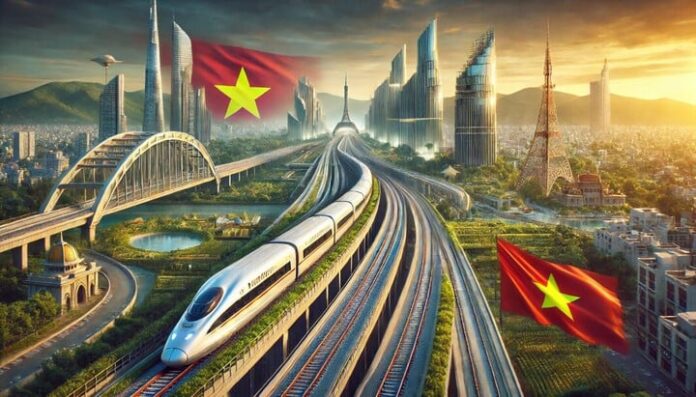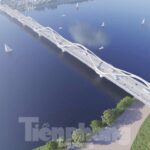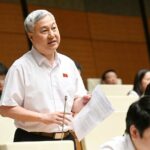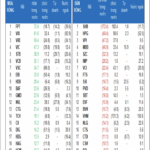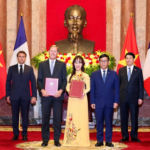In a document sent to Prime Minister Pham Minh Chinh and Deputy Prime Minister Tran Hong Ha on May 26th, Tran Ba Duong, Chairman of THACO Group, proposed to invest in the High-Speed North-South Railway Project using the company’s own capital and other legal sources of funding.
The total investment for the project, including compensation, support, and resettlement costs, is estimated at VND 1,713,548 billion, equivalent to approximately USD 67.34 billion. THACO has proposed an investment of approximately VND 1,562,000 billion, or about USD 61.35 billion. The land clearance component is suggested as a separate project to be carried out by the State and excluded from the total investment capital.
According to THACO, the company’s capital structure will comprise 20% of the total investment, equivalent to approximately USD 12.27 billion. This capital will come from the company’s own sources, including owner’s equity and legally mobilized capital through equity issuance.
The remaining 80% of the total investment, approximately USD 49.08 billion, will be borrowed from domestic and foreign credit institutions, with a 30-year government guarantee and interest support.
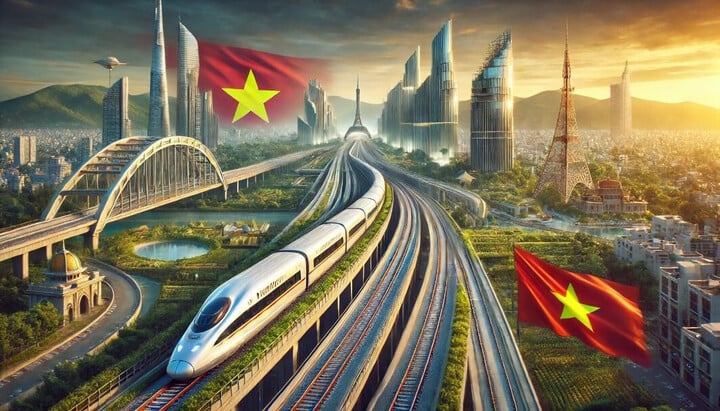
THACO Group expresses interest in investing in the high-speed North-South railway. (Illustrative image)
THACO has proposed a two-phase implementation plan for the project. Phase 1 involves completing and operating the Ho Chi Minh City-Nha Trang and Hanoi-Ha Tinh segments within five years. These segments have been prioritized due to the high demand for passenger and cargo transportation.
Phase 2 entails finishing the remaining Ha Tinh-Nha Trang segment, which features complex terrain with mountains and slopes, in the subsequent two years. This extended timeframe will allow for thorough research and the identification of the most effective solutions.
“The proposed seven-year timeline, with distinct phases, aims to provide domestic partners with opportunities to collaborate, learn, and receive technology transfers. This approach ensures safe and efficient construction, production, installation, and operation of the high-speed railway system,” THACO stated.
THACO intends to apply modern technology, including electric-powered trains running on rails, adhering to international standards. They plan to collaborate with experienced partners from Europe (Germany, France, etc.) and Asia (Japan, South Korea, etc.) for technology transfers while also focusing on training local personnel to eventually master the technology in infrastructure construction, train production, signaling systems, management, and operation of the high-speed railway.
“THACO gives priority to coordinating and cooperating with domestic enterprises and groups for items and tasks that can be met by domestic capacity,” the document emphasized.
In terms of the business plan, THACO has proposed a 70-year operation period for the project. The investor will suggest ticket prices for approval by the state agency, ensuring financial feasibility and adhering to the capital recovery timeline as per regulations.
Additionally, the company has requested to benefit from preferential policies under Resolution 172/2024/QH15 and the Law on Railways 2017. These include separate compensation, support for resettlement, priority in allocating land for urban development following the TOD (Transit-Oriented Development) model, exemption from import tax on machinery and equipment not yet produced domestically, and the highest level of investment incentives permitted by current laws.
THACO has committed to taking charge of the entire value chain of the project, from investment and construction to operation and exploitation. The group pledges to collaborate with domestic enterprises in metallurgy, mechanics, supporting industries, and digital technology to establish a modern railway industry.
THACO’s members, such as THACO INDUSTRIES, will take on the research and production of locomotives, carriages, and components, while THADICO – Dai Quang Minh, will focus on infrastructure development and management. THISO will develop social infrastructure, including commerce, healthcare, and education around the stations following the TOD model.
When Will Construction Begin on Hanoi’s Trần Hưng Đạo and Ngọc Hồi Bridges?
The plans to construct two new bridges over the Hong (Red) River in Hanoi, Vietnam, are well underway. With preparations almost complete, the investment plans for Tran Hung Dao Bridge and Ngoc Hoi Bridge are set to move forward, with construction commencing on either August 19th or, at the latest, September 2nd of this year. These two bridges will be part of a larger project, consisting of six bridges in total, spanning the majestic Hong River.
The Cash Conundrum: When Having Money Doesn’t Mean Spending It
“The delay in disbursement has led to a significant amount of money remaining unused in the budget, carrying over from year to year. This idle money, while sitting in the budget, incurs interest payments on borrowed funds, resulting in wasteful expenditure. As pointed out by Delegate Tran Van Lam, this situation needs to be addressed promptly to prevent further financial inefficiencies and ensure prudent use of public funds.”
How Do Investor Groups Trade During Unexpected Volatile Sessions?
The market experienced a highly volatile session, with an intensity that didn’t quite match the previous session on April 22nd. The opening index plummeted by almost 20 points, but this downward trend quickly reversed, and the index gradually climbed upwards. Fueled by investors’ expectations regarding trade negotiation outcomes, the index closed with an 18.05-point gain, surging towards the 1,332.51 price level.
Vietjet Orders 20 Wide-body Aircraft from Airbus
Vietjet has bolstered its wide-body aircraft fleet with a new order for A330neo planes, bringing the total number of these state-of-the-art jets to 40. This significant investment in the A330neo showcases the airline’s commitment to offering passengers a superior flying experience. In addition to these wide-body aircraft, Vietjet also has 96 A320neo narrow-body jets on order, demonstrating their confidence in the Airbus family of aircraft to meet their operational needs.

